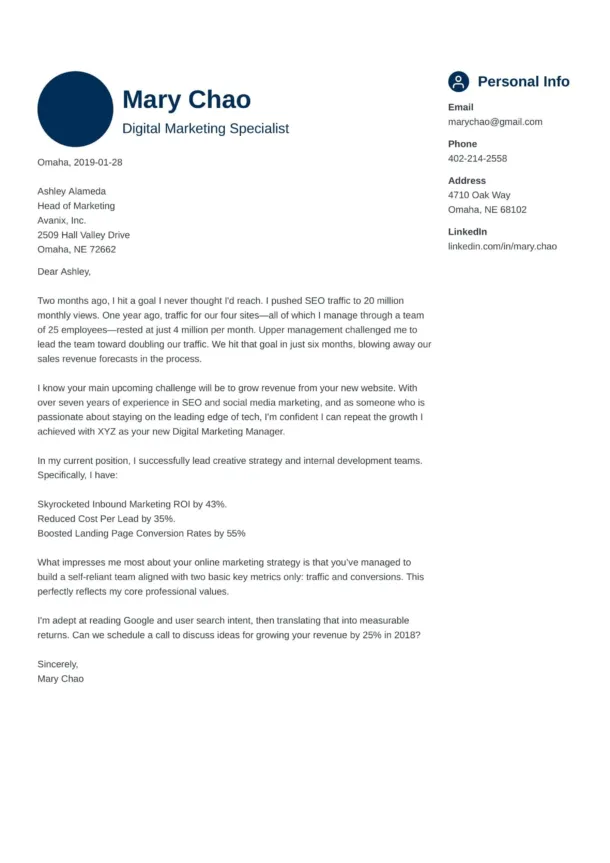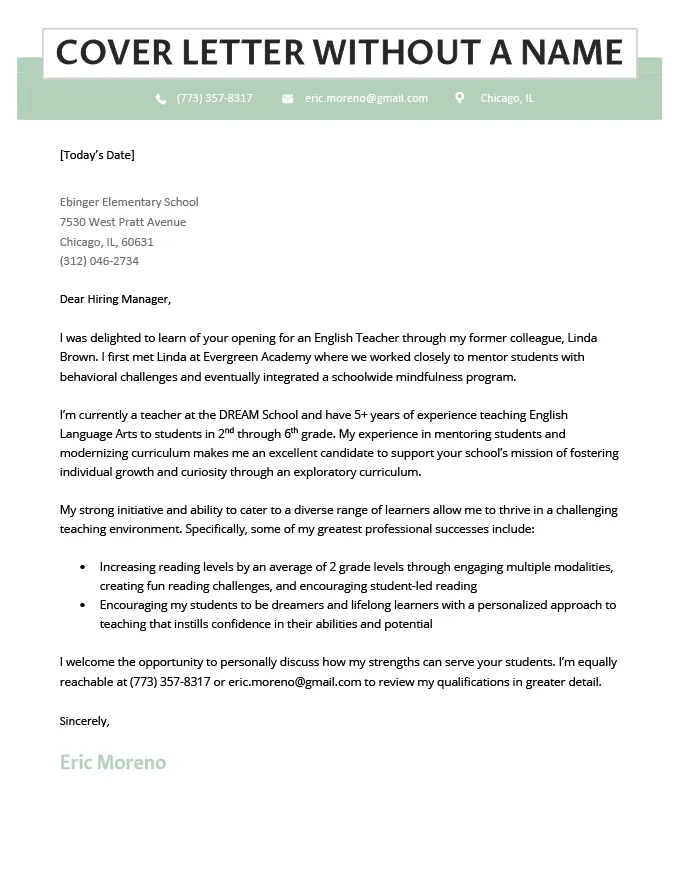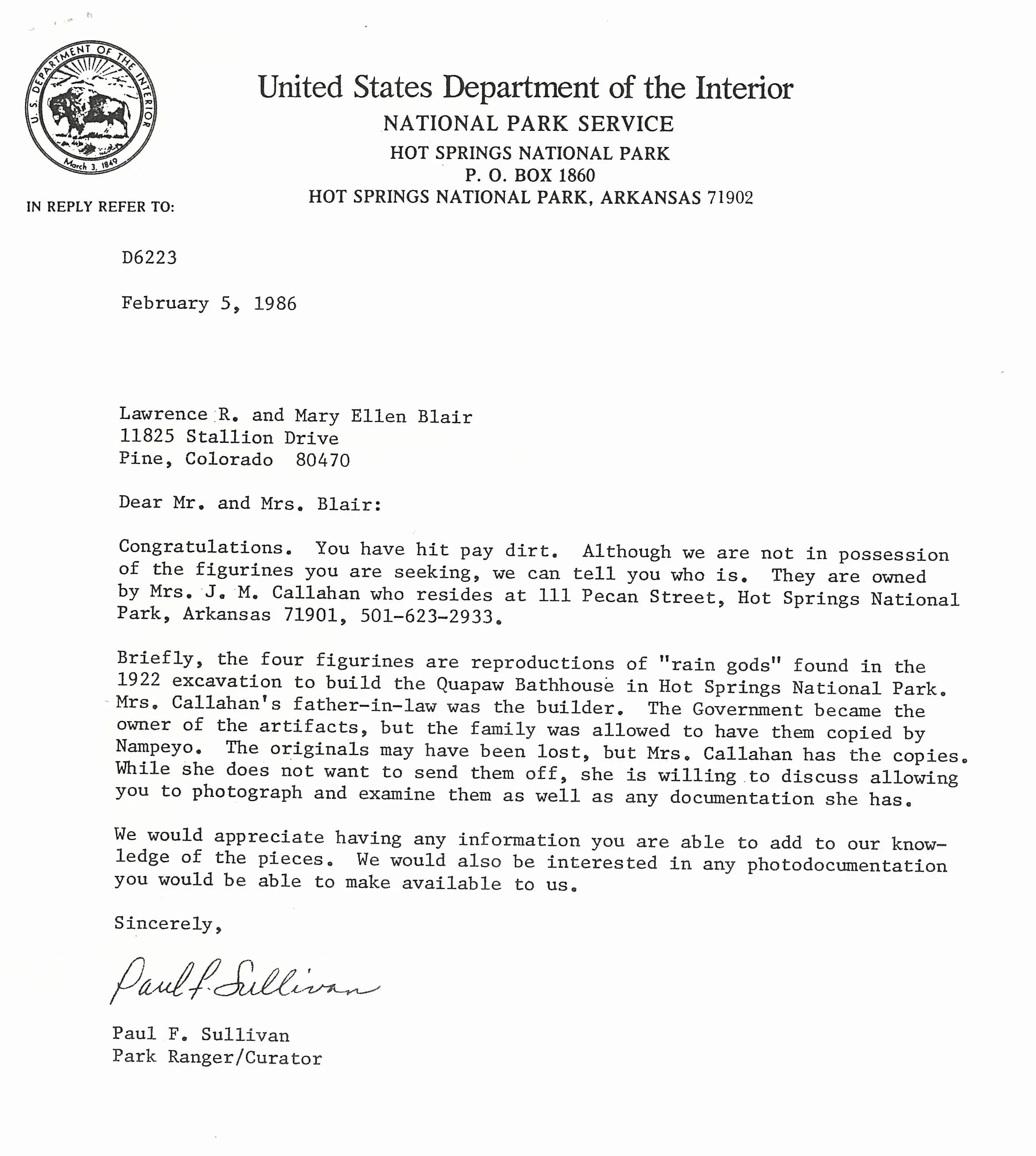Understanding the Challenge
Writing a cover letter is a critical step in the job application process. It’s your first opportunity to make a positive impression on a potential employer. One of the common dilemmas job seekers face is how to address a cover letter when the hiring manager’s name is unknown. This seemingly small detail can cause significant anxiety, but with the right approach, you can confidently navigate this situation and still make a strong impression. This article provides a comprehensive guide on how to address a cover letter when the hiring manager’s name is unavailable, ensuring your application stands out for all the right reasons.
Why the Name Is Sometimes Missing
There are several reasons why you might not know the name of the hiring manager. Understanding these reasons can help you feel more comfortable and less anxious about the situation. It’s not always an oversight or a sign of something negative; often, it’s a matter of company structure or the application process itself.
Large Company Structures

In large companies, the human resources department or a recruitment team might handle the initial screening of applications. The specific hiring manager for a particular role may not be involved until later stages of the process. This is especially true for entry-level positions or roles with a high volume of applicants. The sheer scale of operations can make it impractical to list individual hiring managers on job postings or application instructions. Moreover, the role of hiring managers can change frequently within larger organizations.
Online Application Portals
Many companies use applicant tracking systems (ATS) or online portals to manage job applications. These systems often streamline the submission process and might not always provide the name of the hiring manager. The information available to applicants may be limited to protect the privacy of employees or to centralize the initial screening process. Furthermore, some companies deliberately avoid listing names to prevent bias or to ensure that all applications are initially assessed objectively based on skills and qualifications.
The Importance of a Proper Salutation
While you might not have a specific name, the way you address your cover letter still matters. A well-crafted salutation sets the tone for your entire application and can leave a lasting impression on the reader. It’s a sign of your professionalism, your attention to detail, and your respect for the potential employer. A thoughtful greeting indicates that you’ve taken the time to personalize your application, which can significantly boost your chances of getting noticed.
Showing Respect and Professionalism

A proper salutation is a cornerstone of professional communication. It shows respect for the reader and demonstrates your understanding of workplace etiquette. Using a generic or careless greeting can be perceived as a lack of attention to detail or a lack of genuine interest in the role. A professional approach demonstrates that you take your job search seriously and are committed to making a positive impression from the very beginning. It signals that you’re likely to conduct yourself with similar professionalism in the workplace.
Demonstrating Initiative and Research
Even if you don’t know the name initially, making an effort to find it can be highly beneficial. Demonstrating initiative by researching the company and the role shows that you’re willing to go the extra mile. It indicates a genuine interest in the position and a desire to learn more about the organization. This research often helps you tailor your cover letter to the specific needs and values of the company, which can significantly increase the impact of your application.
Effective Alternatives to a Named Salutation
When a name is unavailable, several alternative greetings can maintain professionalism and still show that you’ve put effort into your application. These alternatives allow you to avoid a generic greeting while still conveying respect and a positive tone. The key is to choose the option that best suits the situation and the information available to you.
“Dear Hiring Manager”

This is a widely accepted and perfectly acceptable greeting. It is straightforward and professional, especially if you are unable to find any other specific contact information. Ensure the capitalization is correct – both ‘Dear’ and ‘Manager’ should be capitalized. While it’s a common choice, it’s still far better than a generic greeting that lacks any reference to the company or role.
“Dear [Department] Team”
If you know which department you’re applying to (e.g., Marketing Department, Sales Team), addressing the letter to the team can be a good alternative. This demonstrates your awareness of the company structure and shows that you’ve considered who will be reviewing your application. This option is particularly effective when you know the role falls under a specific department, but you are unsure of the individual hiring manager.
“Dear [Job Title]”
If the job posting specifies a job title that would likely oversee the role (e.g., “Dear Recruiting Coordinator,” “Dear Senior Project Manager”), you can use that title in your greeting. This shows that you understand the organizational hierarchy and are directing your letter to the relevant party. It’s a good choice when the job posting is very specific about the role and its reporting structure.
Research Strategies to Find the Right Person

Even when a name isn’t provided, there are several ways to try and find the hiring manager. Investing a little time in research can make your cover letter more personal and can significantly increase your chances of success. These methods can help you identify the correct contact and avoid a generic greeting.
Company Website Analysis
Start by exploring the company’s website. Look for an “About Us,” “Team,” or “Contact” section. Sometimes, you can find the names of key personnel, especially for smaller companies or specific departments. Check the careers page for any contact details or, if the job posting is listed there, see if a recruiter’s name is provided. This direct approach often yields the most relevant information and ensures you’re connecting with the right person.
LinkedIn and Professional Networking
LinkedIn is a powerful tool for finding the hiring manager. Search for the company and then filter by people. Look for individuals with titles related to the position you’re applying for, such as “Hiring Manager,” “Recruiter,” or “Team Lead.” You can also look at the profiles of those who currently hold the job you are seeking. Once you’ve identified a potential contact, review their profile to confirm they handle hiring. If possible, connect and send a polite message asking if they are the appropriate person to whom you should address your application. However, be mindful of sending too many unsolicited messages.
Direct Contact via Phone or Email

If the job posting provides a company phone number or email address, consider contacting the company directly. Ask to speak with someone in the hiring department or a recruiter. Explain that you are applying for a specific position and would like to know the appropriate contact person. This approach requires a bit of extra effort, but it can often yield the most accurate results and demonstrate your strong initiative. Be sure to be polite and professional in your communication.
Formatting Your Cover Letter
Beyond the greeting, the overall formatting of your cover letter is essential for making a positive impression. A well-formatted letter is easy to read, professional, and organized, which can significantly enhance the impact of your message. Adhering to standard formatting practices shows attention to detail and respect for the reader’s time.
Header and Contact Information
Begin your cover letter with your contact information. Include your full name, address, phone number, and email address. Following this, add the date and the company’s address. Ensure that your contact information is accurate and up-to-date. If you are using a digital cover letter, it’s helpful to include a link to your LinkedIn profile or online portfolio, if applicable. This allows the hiring manager to quickly access more information about your background and experience.
Crafting the Body Paragraphs

The body of your cover letter should highlight your relevant skills and experiences. Start with a compelling introduction that captures the reader’s attention and clearly states the position you’re applying for. Then, describe how your qualifications align with the job requirements, providing specific examples to illustrate your accomplishments. Use keywords from the job description to demonstrate your understanding of the role and the company’s needs. Keep the tone professional and enthusiastic, emphasizing what you can bring to the organization.
Closing the Letter
Conclude your cover letter with a strong closing statement. Thank the hiring manager for their time and consideration, and reiterate your interest in the position. Include a call to action, such as “I look forward to the opportunity to discuss my qualifications further in an interview.” End with a professional sign-off, such as “Sincerely,” or “Best regards,” followed by your full name and contact information. A well-crafted closing leaves a lasting positive impression and makes it easier for the hiring manager to follow up.
Examples of Appropriate Cover Letter Openings
Here are some examples of how to open your cover letter, depending on the information you have available:
When to Use “Dear Hiring Manager”
“Dear Hiring Manager,”
I am writing to express my enthusiastic interest in the [Job Title] position at [Company Name], as advertised on [Platform]. With [Number] years of experience in [relevant field], I am confident I possess the skills and experience to excel in this role and contribute significantly to your team. My resume provides further details regarding my qualifications.
When to Use a Department-Specific Greeting
“Dear Marketing Team,”
I am excited to apply for the Marketing Specialist position at [Company Name]. My background in [specific area of marketing] and my proven track record of [achievements] make me a strong candidate. I am eager to leverage my skills to support your marketing initiatives and drive positive results.
When to Use a Job Title in the Salutation
“Dear Recruiting Coordinator,”
I am writing to express my interest in the [Job Title] position, as advertised on [Platform]. With my background in [relevant field] and experience with [specific skills], I am eager to contribute to [Company Name]’s success. My resume, which is enclosed, provides further details about my experience and qualifications.
Final Proofreading and Review
Before submitting your cover letter, it is crucial to proofread it carefully. Check for any grammatical errors, spelling mistakes, or typos. Ensure that your formatting is consistent and professional. Have a friend or family member review your cover letter as a fresh pair of eyes can often catch mistakes you may have missed. A polished cover letter demonstrates your attention to detail and your commitment to presenting yourself in the best possible light. It also indicates that you respect the reader’s time and are dedicated to producing quality work.
In conclusion, addressing a cover letter without a name can be handled effectively by using the strategies and tactics outlined in this article. By showing professionalism, demonstrating initiative, and utilizing appropriate greetings, you can increase your chances of making a positive impression and advancing your job application. Remember, it’s the content of your cover letter that truly matters, so focus on showcasing your skills, experiences, and enthusiasm for the position. By following these guidelines, you can create a cover letter that effectively highlights your qualifications and helps you stand out in the competitive job market.
